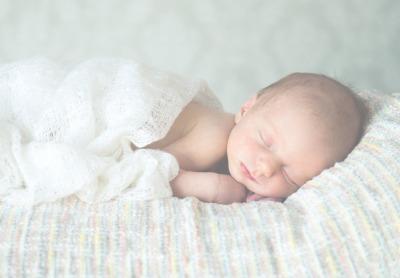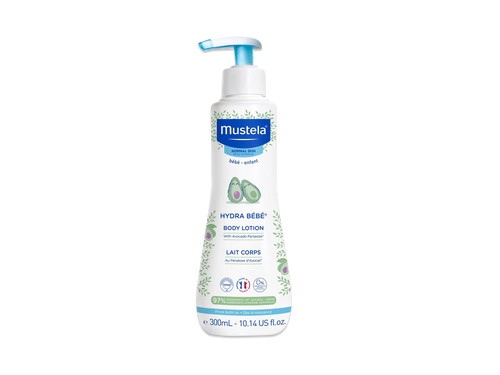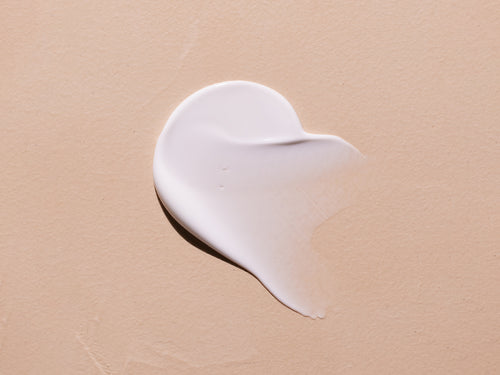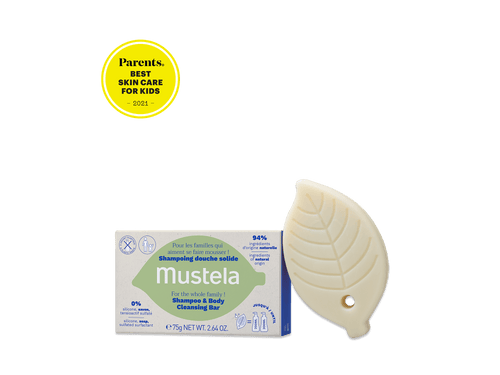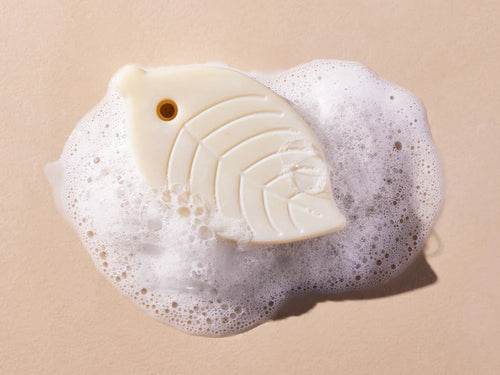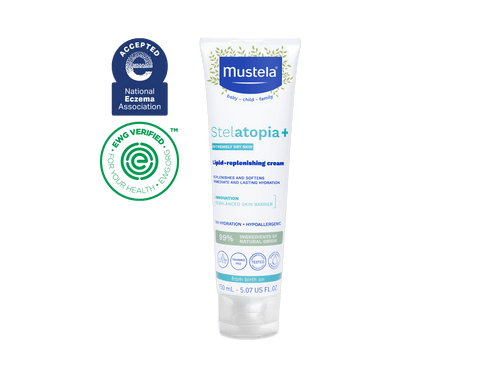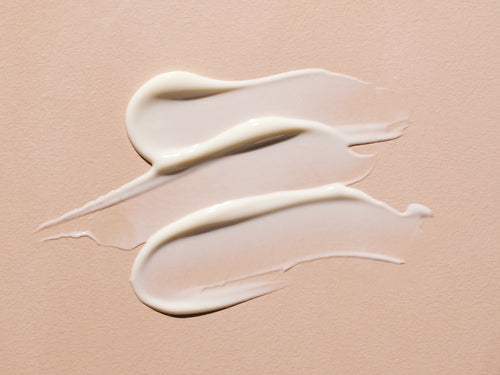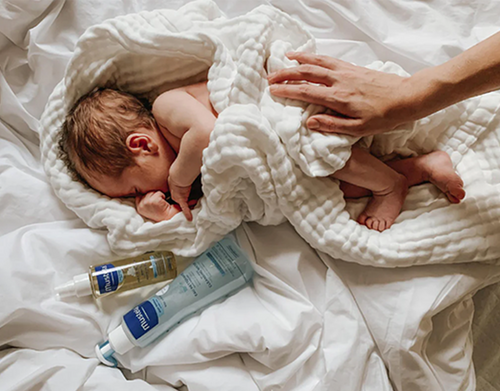Bringing a child into the world is one of life’s most magical experiences. It comes with all sorts of emotions — happiness, excitement, and, sometimes, concern. One of the things that may cause you to worry is noticing that your newborn’s skin is peeling.
Peeling skin is a common newborn condition. It’s also something that new parents often ask about.
If your newborn has peeling or dry skin on their face, you’re probably wondering:
- Whether it’s normal
- What’s causing it
- What you can do to treat it
In this post, the baby experts at Mustela will answer all of these questions to help put your mind — and your newborn — at ease.

Table Of Contents
- Is It Normal For A Newborn To Have Peeling Skin?
- What’s Causing My Newborn’s Skin To Peel?
- Is My Newborn’s Peeling Skin Painful?
- How Do I Treat Newborn Skin Peeling?
- When Do I Need To Take My Baby To A Doctor?
- Frequently Asked Questions
Is It Normal For A Newborn To Have Peeling Skin?
If your newborn’s skin is peeling, the first question that’s probably crossed your mind is whether or not it’s normal. You can now breathe a sigh of relief: It’s perfectly normal.
In fact, all newborns lose their outer layer of skin in the first two to three weeks after birth. Babies spend their first nine months surrounded by protective liquids, so being exposed to dry air is a new phenomenon for them. It can be a difficult transition.
As newborn babies adjust to life outside the womb, they must create a new layer of skin suitable for their new environment. This means getting rid of their old skin and replacing it with an outer layer that’s tougher and more resilient. So, most newborns' skin will peel off in their first few weeks of life.
Of course, this may result in some unsightly peeling skin on your little one’s body. Just remember that it’s perfectly normal and that it will heal soon. Keep reading to find out all the most effective ways to treat your newborn’s peeling skin!
What’s Causing My Newborn’s Skin To Peel?

Their Vernix Is Gone
While in gestation, your baby is surrounded by something called amniotic fluid. Amniotic fluid helps to protect your infant while in the womb. It also helps to pass nutrients from mother to child.
Around the 20th week of gestation, a thin layer of protective wax forms on the outside of your baby’s skin. This waxy outer layer is called vernix. Interestingly, the official name for vernix is vernix caseosa, which is Latin and roughly translates to “cheesy varnish.”
While researchers aren’t entirely sure what the purpose of vernix is, there are a number of theories, such as:
- Vernix may stop your child from absorbing too much fluid while in the womb.
- It can act as a natural lubricant during labor.
- Vernix supplies antibacterial protection around the time of birth.
- It can protect your newborn’s skin during and immediately after delivery.
Whatever the reasons for its development may be, vernix is usually washed off a newborn’s skin soon after birth. Some small patches of vernix may remain in your little one’s creviced skin, such as the armpits or between the toes.
That’s perfectly fine. In fact, medical professionals advise against washing off vernix intentionally. Instead, you should allow it to fall off naturally (which will happen in the first several weeks of your child’s life).
Once most of the protective vernix is gone, your newborn’s skin becomes more vulnerable to the harsh conditions of life outside the womb. Infants have extremely soft, delicate skin that’s often irritated easily. On top of that, consider the fact that your little one has spent most of their entire existence surrounded by fluid.
As a result, something as ordinary as dry air has the potential to cause dryness and peeling on your newborn’s skin.
Overexposure To Water
While your baby grows in a fluid-filled sac in the womb, once they are born, water can wash away some of the natural oils present in their skin. Those natural oils form a barrier that keeps hydration in and environmental irritants out.
If your newborn gets overexposed to water — typically in the form of long baths — their skin may become irritated and dry out because the natural oils that are left can’t keep the necessary moisture from escaping before their body can replace it.
When that happens, you may notice peeling, tightness, flaking, and other signs of baby dry skin on their face.
To learn how to prevent overexposure to water from becoming an issue for your little one, be sure to read the following tips in the How Do I Treat Newborn Skin Peeling? section below:
- Make Baths Short And Sweet
- Use Lukewarm Water
- Use a Baby Cleanser (Not Soap!)
- Add Bath Oil
Working these suggestions into your baby’s bath time and following up with a gentle application of our Certified Organic Hydrating Cream with Olive Oil and Aloe is the best way to keep your little one happy, healthy, and comfortable in their skin.
Cold, Dry Air

For your little one’s developing body, the cold, dry air where you live can lead to surface dehydration and baby dry skin on their face.
Even if the temperature and humidity in their nursery, the living room, or your bedroom is comfortable for you, a newborn’s skin is more sensitive than yours and dries out more easily.
For solutions to this, check out our tips on avoiding cold air and using a humidifier below.
Adult Skin Products
During the first few months of your newborn’s development, their skin is very sensitive because it hasn’t built up its natural defenses.
Because of that sensitivity, moisturizers and creams made for adults can irritate delicate areas on your little one’s body and lead to baby dry skin on their face.
Even a small amount of adult skincare products — such as those that rub off when you kiss or nuzzle your baby — can affect their skin for the worse.
Keep this from becoming an issue by following the tips mentioned in the following sections later on in this article:
- Apply Baby Moisturizer
- Wash Clothing With Gentle Detergents
- Choose The Right Products For Your Baby
- Check For An Allergy
Too Much Sun
As we mentioned earlier, cold, dry air can lead to dehydration on the surface of your newborn’s skin, which results in dry skin. In many ways, the opposite end of the spectrum — too much sun — can cause dry skin as well.
However, too much sun shouldn’t be a concern for newborns. Why? Until your baby is six months old, the safest option is to keep them out of direct sunlight entirely. Their delicate, vulnerable skin isn’t ready for the strong rays of the sun.
If something happens and your little one does spend time in the sun, keep in mind that this exposure could result in dry skin on their face.
For more tips on how to reduce the amount of sun your baby gets, read the section Limit Sun Exposure in the How Do I Treat Newborn Skin Peeling? section below.
Not Enough Fluids
External and environmental factors are some of the primary causes of dry skin in newborn babies. But internal factors also play a role in how well your little one’s body can maintain soft, smooth, and healthy skin.
Of those internal factors, the most common cause of baby dry skin on the face is slight dehydration. This is different from the surface dehydration caused by cold, dry air or too much sun and has more to do with your newborn not getting enough fluids.
If your baby develops peeling or dry skin on their face and you suspect that they might be dehydrated, keep reading for our tips on making sure they get enough fluids and then talk to your pediatrician.
Eczema

In some cases, a skin condition called atopic dermatitis (a.k.a. eczema) can also lead to a baby’s dry skin. The official cause of eczema is unknown, though there may be a genetic component to it.
However, experts have found that nearly half of those who suffer from moderate to severe eczema also have other allergies, including:
- Asthma
- Hay fever (a.k.a. seasonal allergies)
- Allergic rhinitis
- Food allergies
Many of these allergies don’t start in early infancy. Instead, they may manifest as eczema.
Common symptoms of this dry skin condition include:
- Itchy skin
- Dry or peeling skin
- Red, chafed, or thick skin
- Inflammation that comes and goes
- Rash on the face, neck, wrists, knees, elbows, and ankles
In babies with eczema, dry skin tends to make the rash and itching worse.
If you suspect that your baby has eczema, talk to a doctor who will recommend a cream or ointment to relieve the symptoms.
Is My Newborn’s Peeling Skin Painful?
A common concern among new parents is that their baby is experiencing pain or discomfort from peeling skin. After all, newborn skin peeling can look a bit odd and might lead a parent to believe it’s painful.
Well, we have great news for you! It’s not painful at all. As we just mentioned, all newborns have peeling skin in their first month outside the womb.
It’s not only normal; it’s necessary. Your baby needs to develop a new, stronger layer of skin that’s more suitable for their new environment outside of mom’s belly.
Even in severe cases of newborn skin peeling, infants probably don’t even notice that it’s happening. It’s not something that they feel or are affected by. But this doesn’t mean you shouldn’t take special care of your baby’s skin.
While newborn skin peeling is perfectly normal and doesn’t require a visit to the doctor, you should know that there are other baby skin conditions that might.
Later, we’ll go into more detail about baby acne, cradle cap, eczema, and other skin issues that may give your little one itchy, red, dry, or scaly skin.
How Do I Treat Newborn Skin Peeling?
Now that we’ve gone over what causes your newborn’s skin to peel, let’s have a look at all the things you can do to treat it.

Make Baths Short And Sweet
Long baths can remove moisture and hydration from your newborn’s delicate skin. Make efficient use of your baby’s bath time! Five to seven minutes is the ideal length of time for your newborn’s bath. Try not to allow it to last more than 10 minutes.
When it comes to bathing babies, more is not always better. In addition to keeping baths short, make sure not to bathe your baby too frequently. Limit baths to once per day. Anything more could dry out your little one’s skin.
Between bath times or when you’re on the go, you can use No-Rinse Soothing Cleansing Water, which will keep your baby clean from head to toe — no bathwater or rinsing needed!
After bath time is over, gently pat your baby’s skin dry from head to toe and make sure to pay special attention to the tricky nooks that have the potential to trap water and moisture — the diaper area, chubby leg folds, and tiny armpits.
Trapped moisture could lead to skin irritation or a rash.
Use Lukewarm Water
Hot water dries out skin for people of all ages — including newborns. If your little one has peeling skin, you definitely don’t want to use water that’s too warm.
A water temperature of 100° F is perfect for your newborn’s sensitive skin. And always follow a bath with a layer of a hydrating moisturizer.
Use A Baby Cleanser (Not Soap!)

To help treat and prevent peeling skin, only wash your newborn with a cleanser specially formulated with natural ingredients for babies. The soap you use for yourself is likely too harsh for your newborn’s delicate skin.
Baby-friendly shampoos are also beneficial for your new little one.
Add Bath Oil
Make bath time a little less drying by adding a drop or two of bath oil to the water before getting started. Mustela’s bath oil preserves the skin barrier to help keep baby’s skin hydrated. Plus, you can also use it as a cleansing oil when their body is wet.
Finally, bath oil will help neutralize any harsh chemicals that could further dry out your little one’s skin. All of this will help you treat and prevent newborn skin peeling.
One word of caution: Remember that oil in the bath can make the tub extra slippery!
Be careful getting your baby in and out of the bath, and make sure to clean the tub to remove the oily layer when necessary. Use natural cleaning products to avoid leaving irritating chemicals in baby’s bathtub.
Avoid Cold Air And Wind
As we mentioned above, newborn skin simply isn’t used to being exposed to air. Compared to the amniotic fluids they were surrounded by while in gestation, the air outside the womb is very dry.
To treat your newborn’s peeling skin, keep your home at a comfortable temperature and keep your bundle of joy wrapped up when in chilly weather.
Use A Humidifier
Using a humidifier in your home can make a big difference for your baby’s skin. Humidifiers add moisture to the air, which helps treat and prevent newborn skin peeling.
Set the humidifier up in whichever room your baby spends the most time, and let it run for a few hours whenever the air feels a bit dry.
Apply Baby Moisturizer

One of the best ways to treat your newborn’s peeling skin is with a small dab of Mustela Nourishing Cream With Cold Cream. For extremely dry patches on your newborn’s skin, you can also apply a dab of our Stelatopia Emollient Balm.
All of these Mustela products are hypoallergenic, so they will safely soothe your baby and treat their peeling skin — without any risks or side effects.
Wash Clothing With Gentle Detergents
New baby clothes may come with irritants on them. If your newborn has peeling skin, it’s very important to wash all clothing items before putting them on your baby.
It’s also important to wash other materials that will touch your little one’s skin, like sheets, bibs, towels, etc. Make sure to use gentle, baby-friendly laundry detergent.
Dress Your Baby In The Right Clothing
Not only is it important to wash your baby’s clothes in gentle detergents, but it’s also important that you dress your baby in the right clothing. Choose clothing made from soft, gentle fabrics that won’t rub or irritate your newborn’s peeling skin.
Don’t dress your little one in clothing that’s too tight, as tight clothing can prevent your baby’s skin from breathing, possibly leading to irritation and rashes. Opt for loose-fitting clothing instead.
Try Mustela’s Stelatopia Skin-Soothing Pajamas, which are 100% cotton and made with natural ingredients to help soothe baby’s skin.
Lastly, when the weather is chilly, dress your baby in several thin layers rather than one or two heavy layers. Babies tend to get hot (and cold) easily, so multiple rounds of layering and delayering may be necessary to keep your child comfortable and content.
Choose The Right Products For Your Baby
We’ve already explained how important it is to choose baby-friendly cleansers, shampoos, moisturizers, and detergents. But the list doesn’t stop there! Many other products may contain harmful chemicals that will irritate and inflame your baby’s delicate skin.
For instance, many sunscreens contain harmful ingredients that are not safe for infants. These types of sunscreens (and other products with unsafe added chemicals) are not helpful when caring for a newborn with peeling skin. Mineral sunscreens are a much better alternative.
You should always use hypoallergenic skin care products made with natural ingredients on your newborn. Using safe, baby-friendly products, like Mustela’s, will make a big difference for your newborn’s peeling skin.
Give Your Newborn Plenty Of Fluids
On average, newborns need to eat every 90 to 120 minutes. And the only thing babies can consume in their first few months of life is breast milk and/or baby formula. These liquids contain all the nutrients your bundle of joy needs to stay healthy and continue growing.
That said, make sure you’re feeding your baby often enough. This will not only keep your baby healthy and happy, but it will also ensure that they’re hydrated. A well-hydrated baby means well-hydrated skin, which can help clear up any peeling.
Keep Your Newborn Comfortable
This is one of the most important things you can do to treat your newborn’s peeling skin. If your little one seems to be uncomfortable because of their peeling skin, try to make them as comfy and happy as possible.
The tips listed here will all be helpful, but special love and attention from you can go a long way, too.
Check For An Allergy

Your little one may have a sensitivity or an allergy that shows up as dry skin on their face — much like the dry, uncomfortable skin elsewhere on their body.
As we mentioned earlier, the allergic reaction on their face could come from adult skincare products or even cosmetics that inadvertently rub off on your baby’s skin when you kiss them.
The reaction could also come from a lotion or cream you purposely apply to their face and hands. Or, the allergic reaction could come from the blankets, clothes, and stuffed animals that tend to touch your newborn’s face.
We know you want to kiss your beautiful baby all the time, but, instead of kissing them on the lips, cheeks, or forehead, try planting some smooches on their legs, arms, tummy, and shoulders until the peeling or dry skin on their face clears up.
Alternatively, you could make it a point to skip your skincare products for a while to see if that helps.
In regards to baby lotions and creams, it’s worth repeating: Be sure to use a hypoallergenic variety that is free of parabens, phthalates, silicone, and phenoxyethanol.
Our Hydra Bebe Facial Cream and Hydra Bebe Body Lotion are the perfect solutions to this problem. They leave skin silky-smooth and moisturized while being gentle enough not to irritate sensitive skin.
And, finally, check the tags on your baby’s blankets, clothes, and stuffed toys to see what they’re made of.
Switch out these items for those made from different materials, and give your little one different toys to play with for a while to see if that helps the dry skin heal.
One of the easiest ways to find out if it’s your little one’s clothes that are causing dry or peeling skin is to switch to our Stelatopia Skin Soothing Pajamas.
We designed these 100% cotton jammies with microcapsule technology that contain five natural ingredients:
- Avocado oil
- Sunflower oil distillate
- Squalane
- Ceramides
- Vitamin E
These ingredients activate when they come in contact with your baby’s skin and help keep it soothed, comfortable, and moisturized all night long.
With Stelatopia Skin Soothing Pajamas, you can be sure that the dry skin on your baby’s face isn’t caused by the shoulders and arms of the jammies rubbing against your little one’s delicate skin.
Limit Sun Exposure

Limiting sun exposure is one of the best things you can do to prevent baby dry skin and newborn skin peeling.
That doesn’t mean you can’t take your newborn outside until they reach a certain age. It just means you should keep them in the shade whenever possible until their skin has a chance to build up its own natural protection.
Whenever you’re out and about with your little one, try these suggestions for minimizing sun exposure:
- Dress them in a wide-brimmed hat
- Turn their car seat, carrier, or stroller away from the sun
- Install a sunshade on the car window closest to them
- Carry an umbrella or parasol to keep the sun off (this is good for moms and dads, too)
With strategies such as these — and a baby-safe sunscreen like our SPF 50 Mineral Sunscreen Lotion — you can keep the sun exposure to a minimum and prevent baby dry skin from occurring in the first place.
Treat Eczema-Prone Skin
Treating and preventing eczema involves many of the same steps as treating peeling or dry skin. But once you confirm that your baby does have atopic dermatitis, it’s essential to use the right products to make your little one feel better.
Our Stelatopia line is specifically designed for eczema-prone skin and includes creams (for body and face), balms, oils, cleansing gels, and shampoo.
These clinically proven, fragrance-free, and dermatologically tested treatments soothe, replenish, and limit red patches so your newborn is as comfortable as possible during their first few months and years of life.
When Do I Need To Take My Baby To A Doctor?
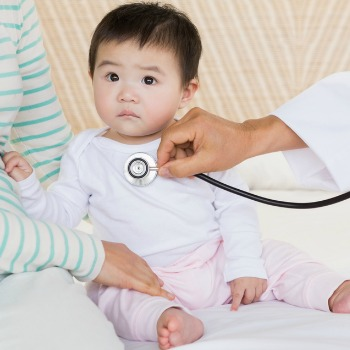
Newborn skin peeling is perfectly normal. With that said, there are some cases in which your newborn will require a trip to the family doctor. If your baby has skin that is red, cracked, scaly, or extremely itchy, visit a doctor as soon as possible.
Below are some of the most common skin problems among newborns.
An Ordinary Rash
There are many different kinds of rashes that your baby may experience.
For example, they may have a simple case of diaper rash, or they may have a slight allergic reaction to an irritant like pet dander or tree pollen.
They may also develop a minor heat rash on their wrists, ankles, neck, or armpits. Too much clothing or an excessively hot environment normally cause this type of rash.
These types of rashes are completely normal and may or may not require a trip to the doctor’s office. Use your judgment to make the right decision.
While all of the rashes mentioned above are normal and will usually go away on their own in a day or two, it’s important to assess the severity of your little one’s rash. If it looks bad or is covering a large portion of your newborn’s body, it’s time to see the family pediatrician.
Atopic Dermatitis (Eczema)
Atopic dermatitis occurs in about 20 percent of the population at some point in life, although it is slightly more common during childhood years.
Eczema is neither life-threatening nor contagious. But if your newborn has bright red patches of skin on their body, a trip to the doctor is a good idea. Eczema might be the cause.

Baby Acne
Only teenagers get acne, right? Unfortunately, no. Even newborn babies can develop acne. Baby acne, like other forms of acne, results in small, oily, red bumps.
Even though around 30% of newborn babies develop baby acne, doctors aren’t entirely sure what causes it.
A probiotic imbalance, exposure to mom’s hormones through breast milk (though that doesn’t mean you should stop breastfeeding!), or a reaction to formula or medication are potential causes.
Baby acne is not a dangerous condition but may be worrisome to you as a parent. Treating baby acne might involve using a gentle cleanser, applying breast milk topically to your baby’s skin, or covering their little hands with socks to prevent them from scratching the acne.
It can also be helpful to steer clear of rough towels, fabrics, and stuffed animals. Baby acne is a normal condition but, if it persists, one that you will want your doctor to look at.
Expert tip: keep a bottle of Mustela’s No-Rinse Cleansing Water on hand to clean your little one’s skin in-between baths and help prevent baby acne.
Cradle Cap (Seborrhoeic Dermatitis)
Cradle cap is a skin disorder that results in red, greasy, itchy, inflamed skin. It occurs in only about 2% of the adult population but in roughly 40% of children and babies.
If your newborn has greasy, itchy, red, and/or scaly patches of skin on their head, cradle cap is almost certainly the culprit.
But don’t worry; it is not a harmful condition, it’s not a result of poor hygiene, and it usually resolves itself within the baby's first year. Cradle cap might get infected, but this is rare.
The good news is that taking care of cradle cap is similar to caring for newborn skin peeling and includes using a humidifier, keeping baths short, and using baby oil and the right baby shampoo, such as Mustela’s Foam Shampoo For Newborns.
See your doctor if you’re concerned about cradle cap.
Congenital Ichthyosis
Ichthyosis is a rare genetic disorder that causes the skin to become thick and scaly. The disorder is sometimes called “fish scale disease,” as the skin may resemble the scales of a fish. There are many different forms of ichthyosis, ranging in severity and symptoms.
If your newborn has skin that is dry, cracked, and scaly, visit a doctor to have it checked out.
Almost all newborns will have flaky, peeling skin in their first several weeks outside the womb. It is completely normal and, in fact, a sign that your baby is developing the kind of skin they need for their new environment.

The majority of the time, newborn skin peeling will resolve itself soon enough. In the meantime, try all of the treatments listed above to keep your little one comfortable and their skin moisturized.
Add lots of hugs and kisses from Mom and Dad, and you’ll have a happy, comfy baby in no time!
Frequently Asked Questions
1) How Long Does It Take For Newborn Skin To Stop Peeling?
You may notice peeling on your newborn's skin for the first few weeks of their life. After that, their skin typically begins to clear up on its own.
If your baby’s skin is still peeling when they’re a month or two old, bring it up with their doctor at your next appointment.
2) What Can I Put On My Newborn’s Peeling Skin?
Since your baby's skin is sensitive, it's essential to use a mild lotion or moisturizer designed specifically for little ones. It shouldn’t contain any parabens or other harsh ingredients.
Our Hydra Bebe Body Lotion is the perfect choice. Its plant-based ingredients help naturally hydrate your newborn's skin, which helps minimize peeling.
3) Does Breast Milk Help Dry Skin?
Breast milk is a powerful tool for helping your baby's skin. The lauric acid it contains has potent anti-inflammatory and antimicrobial properties, which help heal and soothe dry skin.
In addition, the fatty acids in breast milk create a protective barrier, keeping moisture locked in. This protects against further irritation.
You can apply the milk to your little one's body or add some to their bath water. However, it may not be strong enough on its own to completely resolve the problem. You may need to add a baby-friendly moisturizer into your routine in addition to breast milk.
4) When Should I Start Moisturizing My Baby?
It's never too early to start moisturizing your baby's skin! We recommend starting as soon as possible — even before it begins to peel. This helps keep their skin hydrated and prevents further irritation.
Pick a moisturizer or lotion meant for newborns. Otherwise, you could inadvertently cause other skin problems from harsh chemicals.


